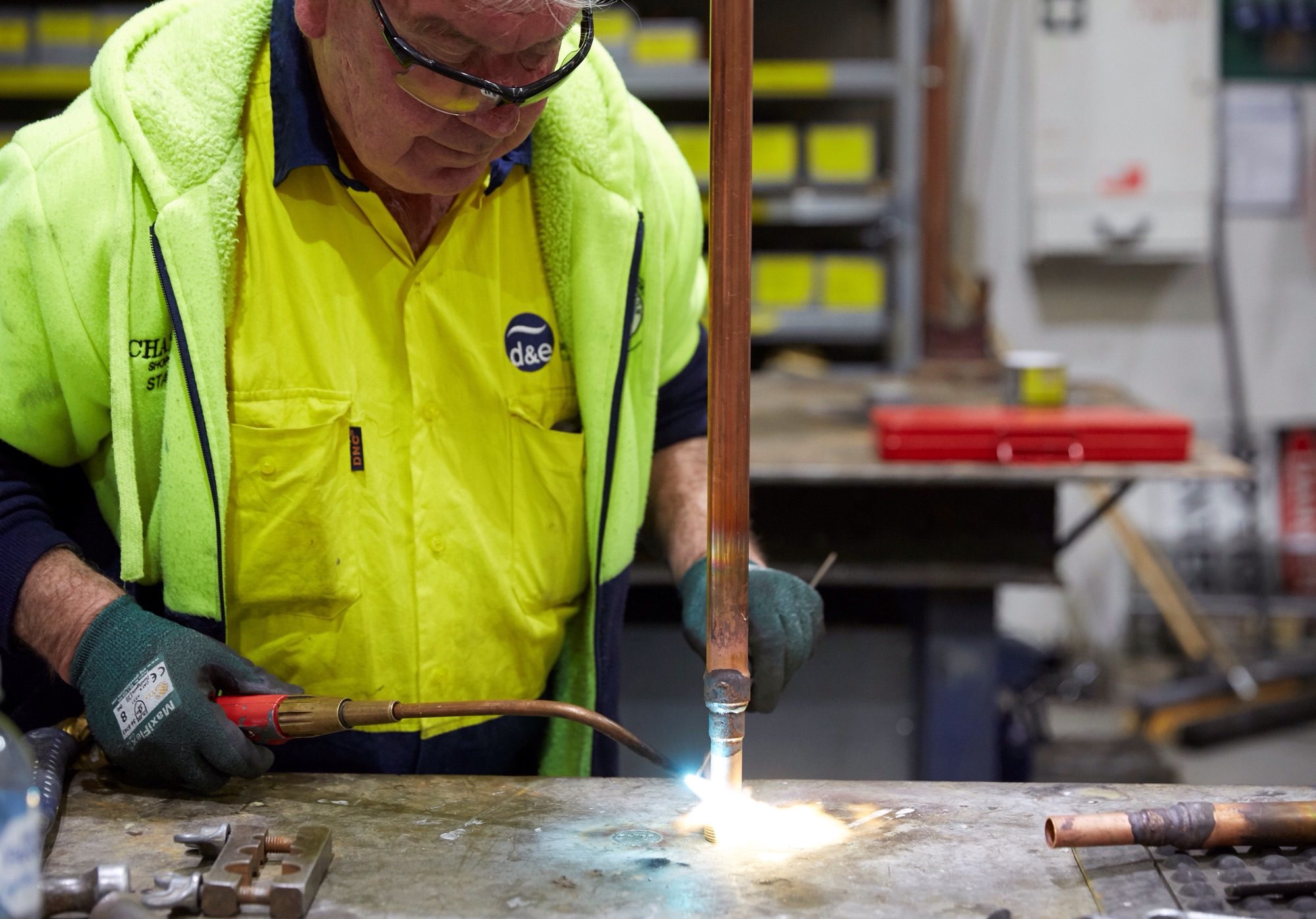Help us improve your experience. See content that is made for you!
See how IBM increased their efficiency by up to 30%!

Help us improve your experience. See content that is made for you!
See how IBM increased their efficiency by up to 30%!


D&E Air Conditioning (D&E) is a construction mechanical services company based in Australia with offices in Melbourne, Perth, Sydney, Brisbane, Adelaide, and Geelong. With more than 500 employees, D&E is one of Australia's largest mechanical contracting companies with capabilities that span design, production, and service maintenance on mechanical and air conditioning equipment across the pharmaceutical, commercial, healthcare, and industrial industries.
Long-time users of Autodesk, D&E continually looks for ways to integrate technology into its tech stack to provide an end-to-end experience for its customers. D&E wanted to digitise its service maintenance program to move towards predictive maintenance to improve its service capabilities. By taking this step, the team will leverage 3D and mapping capabilities to deploy computerised maintenance systems and further differentiate themselves from competitors while delivering superior services.
“Our design, engineering, and installation business has long used technology to develop sustainable mechanical and air conditioning systems,” says Scott Huisman, Service Account Manager at D&E Air Conditioning. “We wanted to adopt similar capabilities into our systems maintenance division to optimise data that improves business processes and provides predictive services for our clients.”
Predictive insight improves processes by helping teams optimise their decision-making regarding asset inspections, equipment repairs, and field service engineering activities. Predictive insight will allow D&E to alleviate unexpected downtime and provide value-added service to their customers by allocating resources for equipment that needs to be maintained rather than focusing on unnecessary service areas.
“The goal of predictive maintenance is to use data to predict when assets need maintenance support, eliminating unnecessary equipment checks, saving time and resources,” says Nicholas Eynon, Energy Performance Manager at D&E Air Conditioning. “With predictive maintenance, we can improve internal resource management by knowing when technicians need to be on site and move from being reactive to proactive.”
Scott Huisman adds that one of the biggest drivers for predictive maintenance is improving relationships with clients by creating value around their services, while minimising downtime and cost.
The first step to meeting their predictive maintenance goal was adopting a mobile computerised maintenance solution. D&E was in the market for an easy to use and customisable solution that balanced the simplicity for the end-user with powerful and sophisticated reporting. And that’s what they found in BIM 360 Ops within Autodesk Construction Cloud™.
The digitised process eliminated the inefficiencies experienced through D&E’s previous process for equipment maintenance. Previously, technicians would use paper-based processes to record maintenance across various sized jobs, which led to lost and incorrectly recorded documentation.
“The process was labor-intensive as technicians would have to replicate documents manually. Each site had different equipment levels that might require 45-50 documents to be updated, printed, and put into a folder that’s kept on site” says Huisman.
With a solution in hand, the next step was standardising processes to gather consistent data across jobsites to move towards predictive capabilities. To standardize digital forms in BIM 360 Ops, D&E consulted industry and Australian compliance standards in addition to individual maintenance specifications to create all-new tasking for the three types of maintenance they perform: compliance, preventative, and reactive.
With BIM 360 Ops, D&E can easily organise documentation and communicate with clients on maintenance status. The automatic reporting capabilities allows maintenance logs to sync in real-time, so that information can be accessed and distributed to clients instantly.
D&E initially planned to pilot BIM 360 Ops on three test sites. However, after an overwhelming response from their technicians on the ease of use and ability to onboard buildings quickly, the team deployed the solution across 20 sites in seven months.
“The technicians are using the tool to its full potential - putting in comments and taking photos - to work more efficiently,” says Eynon. “The intuitiveness of the platform is incredible and provides a more efficient way of reporting that creates consistency across our teams.”
Before BIM 360 Ops, if an auditor asked for the compliance records for a building D&E was servicing, the team would have to dig up old paper-based documentation. Now D&E can quickly search for and find documentation quickly and effectively. The team can then share a digital link with the auditor, saving time and headaches. What used to take hours now takes 10 minutes.
“BIM 360 Ops is that one-stop shop where you can go for all your information,” says Huisman. “It minimizes back and forth communication and eliminates uncertainties for our internal management by keeping everyone up-to-date on maintenance and technician productivity.”
Standardising on BIM 360 Ops has allowed D&E to provide higher quality information around the machinery that they’re servicing to meet industry and regulatory requirements.
Eynon adds that D&E now has access to data to help them optimise decision making and drive efficiencies across their jobsites.
D&E uses BIM 360 Ops for servicing, but the goal is to create a seamless process for connecting data from design to operations for the long-term management of an asset. Eynon shares that D&E’s vision is to have their maintenance regimes set up on day one of construction handover.
“With access to the 3D model data, our technicians will be able to pinpoint with complete accuracy where the equipment is within the facility that we need to maintain,” says Eynon. “For the majority of our contracts, we maintain the building for 12-months after handover. Having that historical project data will make it easier to start on maintenance work immediately by understanding the new facility, which can be time-consuming on larger sites if we don’t have that data.”
Huisman adds that in addition to saving time, connected data will also establish better client relationships.

May we collect and use your data?
Learn more about the Third Party Services we use and our Privacy Statement.May we collect and use your data to tailor your experience?
Explore the benefits of a customized experience by managing your privacy settings for this site or visit our Privacy Statement to learn more about your options.